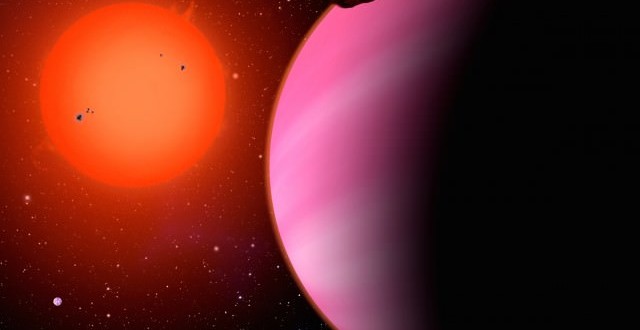After a difficult search, scientists have found definitive traces of water on a relatively small exoplanet for the first time. The exoplanet in question, HAT-P-11b, is the size of Neptune and has copious amounts of both water vapor and hydrogen in its atmosphere.
Using the Hubble Space Telescope, the Spitzer Space Telescope, and the Kepler spacecraft, a team of scientists obtained spectrographic data as HAT-P-11b passed in front of its host star, allowing them to determine the planet’s atmospheric composition.
“When astronomers go observing at night with telescopes, they say ‘clear skies’ to mean good luck,” Jonathan Fraine of the University of Maryland, and the study’s lead author, said in a statement. “In this case, we found clear skies on a distant planet. That’s lucky for us because it means clouds didn’t block our view of water molecules.”
The Neptune-sized exoplanet, dubbed HAT-P-11b, orbits a star called HAT-P-1, taking about five days to complete one lap. The planet, which is located 120 light-years away in the constellation Cygnus, is a warm world and is believed to have a rocky core and gaseous atmosphere.
“We think that exo-Neptunes may have diverse compositions, which reflect their formation histories,” Heather Knutson of the California Institute of Technology in Pasadena, and the study’s co-author, said in the statement. “Now with data like these, we can begin to piece together a narrative for the origin of these distant worlds.”
According to scientists, the results from all the three telescopes showed that HAT-P-11b is covered in water vapor, hydrogen gas and other molecules that are yet to be identified.
“We are working our way down the line, from hot Jupiters to exo-Neptunes,” Drake Deming, a co-author of the study, said. “We want to expand our knowledge to a diverse range of exoplanets.”
Agencies/Canadajournal
 Canada Journal – News of the World Articles and videos to bring you the biggest Canadian news stories from across the country every day
Canada Journal – News of the World Articles and videos to bring you the biggest Canadian news stories from across the country every day



